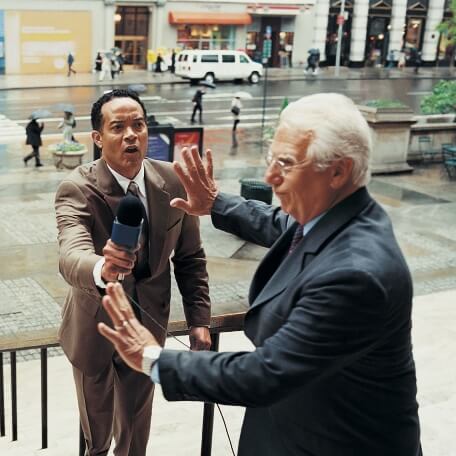Uber took the planning and timing out of commercial cab bookings. AHOY is doing the same for frequent business flyers.
Winging It: AHOY Aims To Be Uber For Flights
Uber took the planning and timing out of commercial cab bookings. AHOY is doing the same for frequent business flyers.

Sylvia Brune, co-founder of fast-growth flight booking app AHOY, explains how she launched her business with WhatsApp and Reddit, why a 'crisis of confidence' cost the business a whole year and how she transitioned from being an informal sole trader to a structured business with an expert team.
What's the business in a nutshell
AHOY is a flight booking app for business travellers looking for speed and flexibility. In the old days, if you needed a taxi, you’d plan ahead and ask your assistant to order it. No busy person wants to wait on hold.
Now you just order an Uber yourself exactly when you need it, its faster and more precise. AHOY applies this idea to booking business flights. AHOY gives customers the tools to simply book, change, personalise, or cancel flights.
Why did you start it
I had travelled around Africa for a few years investing in startups and running accelerator programs. Moving our colleagues around was time-consuming. Plans were constantly changed or delayed, and the lack of speed and transparency when dealing with booking agents frustrated me.
Booking online wasn’t much better and there was a lack of proper support. It pushed me to try to build a solution myself.
How did the business develop
In 2015 when I started, I was mostly curious if others had the same problems as me. So I sent my WhatsApp number to a few friends who travelled a lot. I told them that, if they were ever frustrated while travelling, to WhatsApp me and I’d fix it.
My number got passed around a lot (even ending up on Reddit bizarrely). Within a few months I had a 24/7 WhatsApp travel service booking travel for Uber Launchers, Buzzfeed reporters, consultants, and completely random people all over the world.
The problem was I was doing everything manually myself. It got so hectic that a friend sat me down and said that if I planned to ever sleep again, I should either shut it down, or find tech co-founders to turn my idea into a product.
So I found these Polish twin coders, who liked the challenge of building an Uber experience for flights, and joined up to build today’s AHOY.
Tell us about market conditions
The business travel market is currently served by either large corporate travel solutions which take care of compliance, accounts and budgets or travellers booking on airline sites, and sites that mainly target tourist travellers. A large and growing amount of business travellers want another way.
They want the speed and simplicity of tourist type sites, but require better support after a booking. Approximately 60% of people self-manage their travel, and this is the segment I find especially interesting creating solutions for.
What's been the biggest challenge?
Airlines are mostly focused on flight operations, understandably. They don’t put loads of thought into their booking systems, meaning lots of the tech and procedures are ancient. Ticket rules are overly complicated and different for each airline.
Prices vary depending on country, one-off deals, licences, and distribution partners. Therefore, building a solution that can reliably book or change anything (especially at the last minute), provide accurate ticket information, and still give travellers the best possible price has been interesting to say the least!
What's been your biggest mistake?
In 2017, we started losing bunches of our first users as the companies they worked for got more corporate. They’d been instructed to start only booking via the corporate’s travel management system. We got spooked, and decided to go B2B.
We didn’t like that, regardless of how good the travel solutions we built were, we could lose our users based on the decisions of other people who don’t even travel.
We spent a year building out compliance and approval solutions, and speaking to a lot of travel managers instead of just focusing on our vision to build the best experience for high performing talent who travel.
When we finally accepted that the focus on compliance was complicating and slowing down the experience for travellers, and, that many companies were a lot better at B2B than us, we re-focused on the traveller. But this crisis in confidence wasted us a year.
It taught us an important lesson: stick to your vision if that’s what you know and are passionate about.
What major bumps in the road have you had and how did you overcome them?
Changing the business from essentially just me chatting with travellers, to training up a 24/7 support team that could be trusted by customers was nerve-wracking.
While the support team knew more about airline systems than I, they weren’t frequent business travellers, and it took a long time to train them on the stresses and preferences of our customers.
Even after the 24/7 instant support was built into our app, I still got personal WhatsApps from customers who were angry or frustrated. I would pass on that frustration to the support team and it just made them de-motivated rather than dedicated to making travel smooth for travellers.
So I started turning my phone off more, and trusting the team to deal with issues. As someone who’s used to being in constant control, it was the hardest thing I’ve ever done, but it worked and they are amazing.
How do you attract and retain good people?
I’ve found that good people want to know that what they do matters, and have the freedom to solve difficult problems to make that happen. It’s important for everyone on the team to understand that these are real people, with busy lives, and we are helping them get stuff done. It’s never easy at AHOY, and that makes the small successes even sweeter.
What's your best advice to would-be entrepreneurs?
While it’s important to listen to customers, it’s also important to take a step back and look at the big picture. At the start, we found our customers wanted a lot of things that, given airline system constraints, we couldn’t deliver consistently to a good standard.
So we cut those things and some customers were not happy, but the overall product and service was better as a result. Today we are always striving towards this idea - that to best serve the customer, you can’t always follow the customer, but always need to follow the vision.
Thanks for signing up to Minutehack alerts.
Brilliant editorials heading your way soon.
Okay, Thanks!


